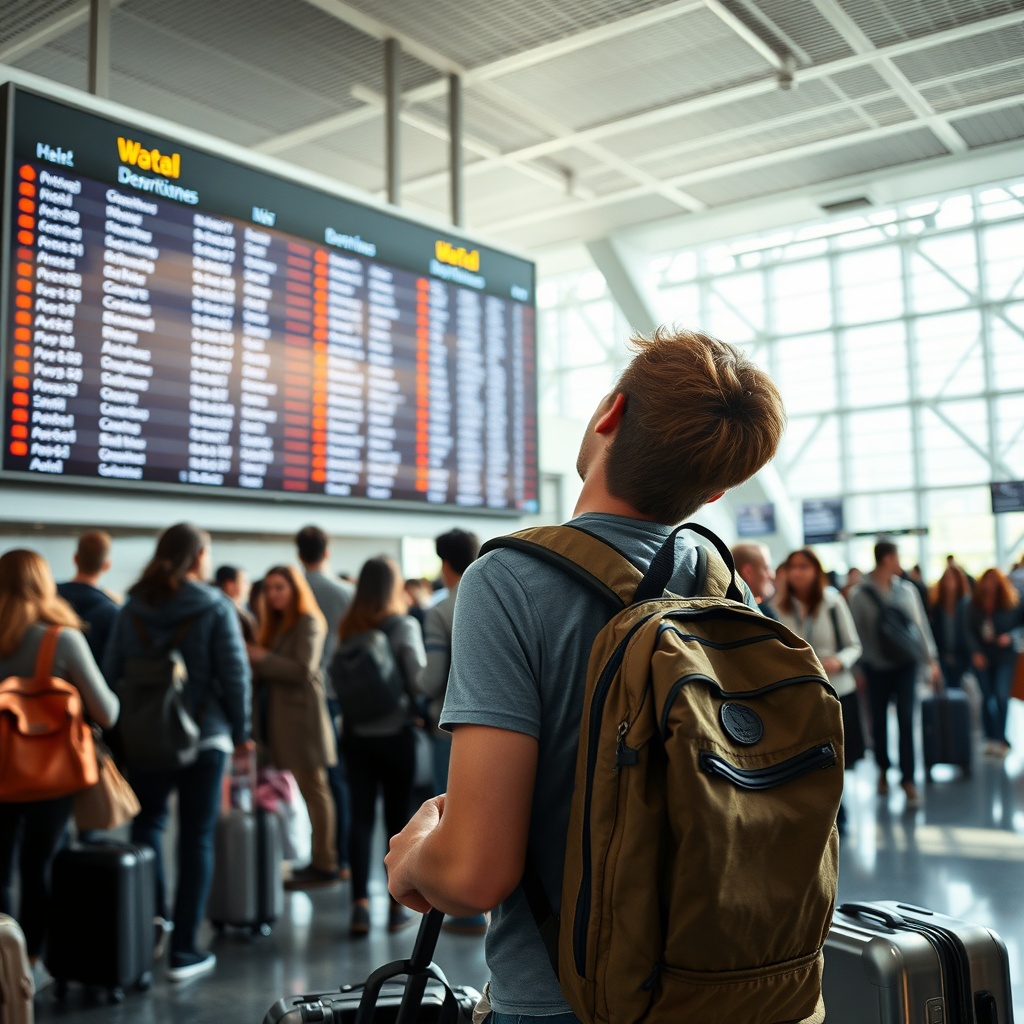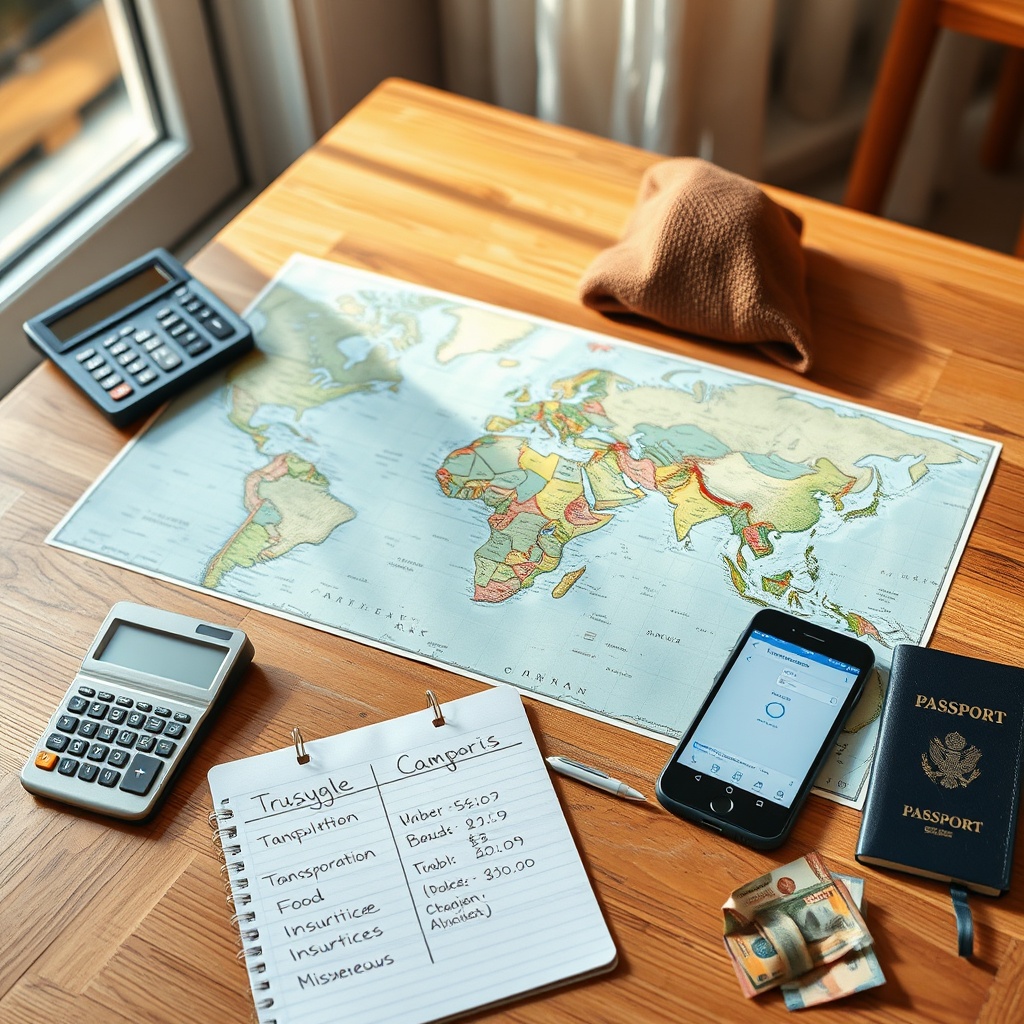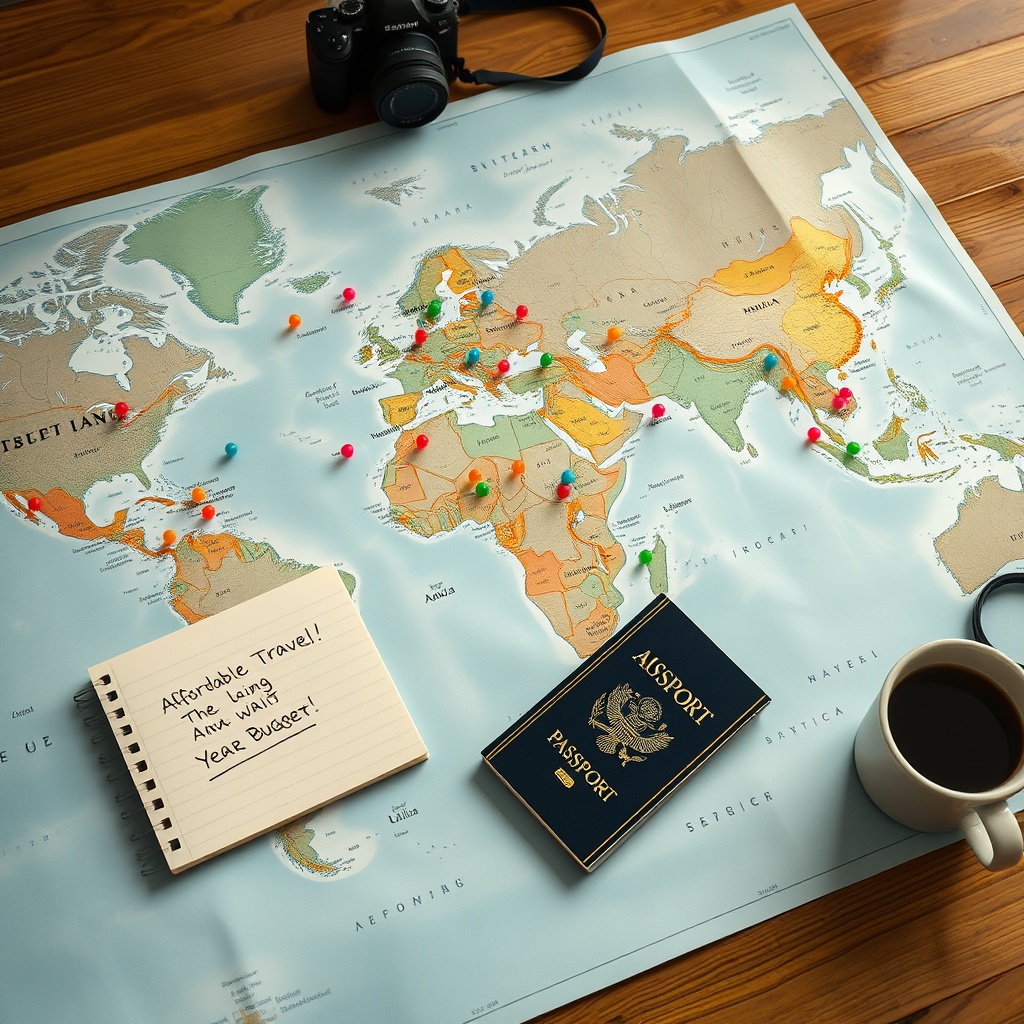Is it possible to travel around the world for 30 million won a year? How to make a budget
What if you could travel the entire globe for less than most people's annual rent? Imagine opening your eyes every morning to a new skyline—from bustling markets in Hanoi to quiet mornings overlooking Andean peaks, all while spending less than €21,000 or $22,000 a year. Wondering how to transform that dream into reality? I’ve spent the last week diving deep into fresh data, consulting seasoned nomads, and cross-checking real expenses to see if world travel truly fits a modest budget. Whether you’re daydreaming from your office cubicle or already packing your bags, this guide gives you the honest insights, examples, and step-by-step plans pros actually use. If you thirst for adventure but fear breaking the bank, keep reading—you’ll be surprised by how attainable your dream is, even in 2025. Let’s map out your adventure together!

Many dream of traveling around the world, imagining endless adventures, new cultures, and breathtaking landscapes. But is it truly possible to circumnavigate the globe for just 30 million won (about $22,000 USD) a year? Let's dive into the reality of budget world travel and see what it takes to make this dream come true.
Stage 1: The Ordinary World
In our everyday lives, we often feel trapped by routine and financial constraints. The idea of world travel seems distant, reserved for the wealthy or the retired. But what if you could break free for just 30 million won a year?
Stage 2: The Call to Adventure
Social media is full of stories about backpackers, digital nomads, and budget travelers. They claim to have traveled for months or years on a shoestring. This sparks the question: Is it really possible?
Stage 3: Refusal of the Call
Doubts creep in. What about flights, visas, food, and emergencies? Can you maintain a healthy lifestyle and still enjoy the journey? Many people abandon the idea, fearing hidden costs and discomfort.
Stage 4: Meeting the Mentor
Fortunately, there are seasoned travelers and online communities sharing tips on budget travel, slow travel, and digital nomadism. They offer practical advice, like choosing affordable destinations, traveling overland, and working remotely.
Stage 5: Crossing the Threshold
The first step is planning a realistic budget. Here’s a breakdown of average annual expenses for a frugal traveler:
| Category | Estimated Annual Cost (KRW) | Tips for Saving |
|---|---|---|
| Flights & Transport | 7,000,000 | Use budget airlines, trains, buses, travel slowly |
| Accommodation | 8,000,000 | Hostels, guesthouses, Couchsurfing, house-sitting |
| Food | 6,000,000 | Cook your own meals, eat local street food |
| Visas & Insurance | 2,000,000 | Research visa-free countries, buy travel insurance |
| Activities & Misc. | 4,000,000 | Free walking tours, local events, budget attractions |
| Total | 27,000,000 |
Stage 6: Tests, Allies, and Enemies
The journey will not be easy. You’ll face challenges like unexpected expenses, language barriers, and homesickness. However, you’ll also meet allies—fellow travelers, locals, and online communities—who share advice and support.
Stage 7: The Ordeal
There will be moments of doubt, especially when emergencies arise or you crave comfort. Flexibility, resourcefulness, and a positive mindset are crucial. Many travelers find that the biggest challenge is not money, but the willingness to adapt.
Stage 8: The Reward
If you plan carefully, stay disciplined, and embrace the adventure, traveling the world on 30 million won a year is possible. The real reward is not just the places you visit, but the life skills, friendships, and perspectives you gain.
Key Insights for Budget Circumnavigation:
- Choose affordable regions (Southeast Asia, Eastern Europe, South America).
- Travel slowly to reduce transport costs and immerse yourself in local life.
- Use technology: apps for cheap flights, accommodation, and local deals.
- Consider remote work or volunteering to supplement your budget.
- Always have an emergency fund and insurance.
Traveling the world on a budget is not a fantasy—it’s a challenge that requires planning, flexibility, and an open mind. With the right approach, 30 million won a year can take you further than you ever imagined. Start small, learn from others, and remember: the journey is as important as the destination.

Dreaming of traveling around the world for a year on a 30 million won budget? It sounds ambitious, but with careful planning and smart spending, it can be more realistic than you think. Let's break down where your money actually goes and how you can make every won count during your global adventure.
Understanding the Big Picture
Before you set off, it's crucial to know the main categories where your travel budget will be spent. Typically, these include:
- Transportation (flights, trains, buses, local transit)
- Accommodation (hostels, guesthouses, budget hotels, homestays)
- Food & Drinks (restaurants, street food, groceries)
- Activities & Sightseeing (tours, entrance fees, experiences)
- Travel Insurance & Health
- Visas & Documentation
- Miscellaneous (laundry, SIM cards, toiletries, emergencies)
| Category | Estimated % of Budget | Monthly Cost (KRW) |
|---|---|---|
| Transportation | 25% | 625,000 |
| Accommodation | 30% | 750,000 |
| Food & Drinks | 20% | 500,000 |
| Activities & Sightseeing | 10% | 250,000 |
| Insurance & Health | 5% | 125,000 |
| Visas & Documentation | 5% | 125,000 |
| Miscellaneous | 5% | 125,000 |
Insights for Smart Travelers
- Choosing budget-friendly destinations (like Southeast Asia or Eastern Europe) can make your money go much further.
- Opting for slow travel—spending more time in each place—reduces transportation costs and allows for deeper experiences.
- Mixing accommodation types (hostels, Couchsurfing, volunteering) helps you save and meet new people.
- Cooking your own meals or eating local street food is both a cultural experience and a money-saver.
- Always set aside an emergency fund for unexpected situations.
How to Track and Adjust Your Budget
Using budgeting apps or a simple spreadsheet helps you monitor your spending in real time. Adjust your daily allowance if you overspend in one category, and celebrate the small wins when you come in under budget.
Pro Tip: Budget Flexibility ▼
Flexibility is key. Some months, you might spend more on transportation (long-haul flights), while others, you’ll save by staying put. The key is to balance your spending over the year, not just month by month.
Final Thoughts
Traveling the world on 30 million won a year is not only possible, but it can also be incredibly rewarding if you understand where your money goes and plan accordingly. Remember, the real value of travel isn’t in luxury, but in the experiences, connections, and memories you create along the way.
Keywords: travel budget, world travel, cost breakdown, smart spending, travel tips

Traveling the world on a budget of 30 million won (roughly $22,000–$25,000 USD) per year might sound impossible, but with the right strategies, it’s surprisingly achievable. The key is not just about spending less, but about spending smartly. Here are some top hacks to make your money go further, so you can experience more for less.
Not all countries cost the same. Southeast Asia, parts of Eastern Europe, and Latin America offer incredible experiences at a fraction of the price of Western Europe or North America. By focusing your travels on budget-friendly destinations, you can stretch your money much further.
Moving less frequently saves a lot on transportation and accommodation. Consider staying in one place for a month or more. Many apartments and hostels offer deep discounts for long-term stays, and you’ll have time to truly immerse yourself in local culture.
Platforms like Airbnb, Hostelworld, and Booking.com let you compare prices and find deals. Don’t overlook local guesthouses or even volunteering opportunities (like Workaway or WWOOF) where you exchange a few hours of work for free lodging and meals. Accommodation is often the biggest expense, so optimizing here pays off.
Skip tourist restaurants and eat where locals do. Street food, markets, and small family-run eateries offer authentic cuisine at a fraction of the price. Cooking your own meals with local ingredients can also be a fun and cost-effective way to experience a new culture.
Traveling by bus, train, or even shared rides is usually much cheaper than flying. In many countries, overnight buses or trains save both time and the cost of a night’s accommodation. Consider budget airlines for longer distances, but always compare all options.
Apps like Skyscanner, Rome2Rio, and Google Flights help you find the best deals on transportation. Currency exchange apps and travel budgeting tools like Trail Wallet can help you keep track of spending and avoid surprises.
While it might seem like an extra expense, travel insurance can save you thousands in the event of an emergency. Choose a plan that fits your travel style and destinations. It’s an investment in peace of mind.
| Hack | Potential Savings | Insider Tip |
|---|---|---|
| Long-term Accommodation | Up to 40% off nightly rates | Negotiate directly with hosts for monthly deals |
| Local Transportation | Save $500–$1,000/year | Buy multi-ride or monthly passes |
| Street Food & Markets | 50%+ cheaper than restaurants | Ask locals for the best stalls |
| Travel Off-Season | 30–60% savings on flights and hotels | Research local holidays and shoulder seasons |
It’s not about deprivation, but about smart choices. With these hacks, your travel budget can last longer, allowing you to experience more of the world. The freedom and perspective gained from long-term travel are invaluable—and totally possible on 30 million won a year.
Remember, the journey is as important as the destination. Budget travel isn’t just about saving money—it’s about opening yourself up to new experiences, meeting incredible people, and discovering what truly matters to you.

Dreaming of traveling around the world for a year on a 30 million won budget (about $22,000 USD)? It sounds ambitious, but with careful planning, strategic choices, and a flexible mindset, it’s more possible than you might think.
Let’s break down realistic travel routes and practical tips that can help you maximize your experience while staying within your annual budget.
Choosing the right route is the most important step in budget world travel. Not all countries are created equal when it comes to daily expenses. By focusing on regions with lower costs of living, you can stretch your budget further and enjoy a richer, longer journey.
- Southeast Asia: Countries like Vietnam, Thailand, Laos, and Cambodia offer incredible culture, food, and nature at very low costs. Daily expenses can be as low as $25-35.
- South Asia: India, Nepal, and Sri Lanka are budget traveler favorites, with vibrant experiences and daily costs often under $30.
- Eastern Europe & The Balkans: Think Georgia, Albania, Romania, and Bulgaria. These countries are much cheaper than Western Europe but offer rich history and beautiful landscapes.
- Central & South America: Consider Guatemala, Nicaragua, Colombia, and Bolivia for affordable adventures, especially if you’re comfortable with basic accommodation and local transport.
By prioritizing these regions, you can spend months traveling without breaking the bank. For more expensive areas like Western Europe, North America, or Oceania, consider shorter stays or focus on work exchanges, volunteering, or house-sitting to offset costs.
Here’s a sample route that balances affordability, diversity, and adventure. This plan is designed for a solo traveler but can be adapted for couples or friends.
| Region | Months | Estimated Monthly Cost | Highlights |
|---|---|---|---|
| Southeast Asia | 4 | $900 | Temples, beaches, street food |
| South Asia | 2 | $800 | Himalayas, spirituality, culture |
| Eastern Europe/Balkans | 3 | $1,000 | Castles, mountains, local markets |
| Central/South America | 3 | $1,000 | Rainforests, ruins, vibrant cities |
Total estimated cost for 12 months: $11,600 (about 15 million won), leaving plenty of room for flights, visas, travel insurance, and occasional splurges.
- Slow Travel: The slower you move, the less you spend on transportation. Stay longer in each place to benefit from weekly or monthly accommodation rates.
- Local Experiences: Eat where locals eat, use public transport, and avoid tourist traps. These choices are not only budget-friendly but also enrich your travel experience.
- Flexible Itinerary: Be open to changing your plans based on local recommendations, off-season deals, or unexpected opportunities.
- Track Your Spending: Use apps or a simple spreadsheet to monitor daily expenses. Awareness is key to staying within your 30 million won budget.
Traveling the world on a budget is not about deprivation—it’s about making smart choices and focusing on what truly matters to you.
With the right mindset, research, and flexibility, traveling the world for a year on 30 million won is absolutely possible. You may not be staying in luxury hotels or eating at Michelin-starred restaurants, but you’ll gain experiences, friendships, and memories that are priceless.
Remember, the journey is about growth, adventure, and discovering the world—and yourself—on your own terms.
Keywords: budget travel, world travel, travel routes, affordable destinations, travel planning